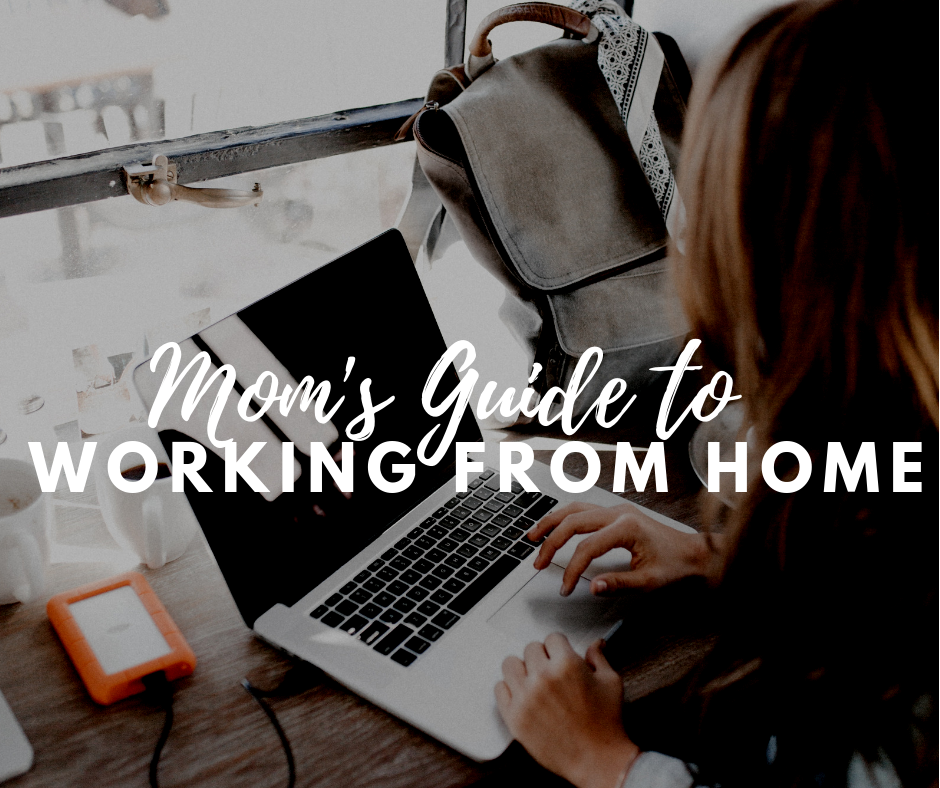Mom’s Guide To Working From Home
When I was pregnant with my daughter, I worked from home as the director of a nonprofit.
“That’s so nice!” people would say. “You won’t have to pay for childcare!”
I remember being surprised by how many people assumed that I would work from home full-time and watch my baby full-time. It was hard for me to envision doing both simultaneously, and I knew that if I wanted to be successful at home and at work, I needed to have childcare lined up.
I’ve since changed jobs, and I now work outside of the home. But during the nearly two years that I worked remotely as a mom, I learned a lot about how to handle the benefits and challenges of this setup. I’ve compiled some related tips based on my own experiences, as well as input from other moms I know who work remotely.
1. Figure out how you want to approach childcare
Most of the moms I know who work from home and have kids (who aren’t yet in school) have childcare lined up, even if it’s just for a few hours a few days a week.
If you can afford it, having childcare outside of the home — e.g. grandparents’ house, daycare, a nanny-share, etc. — is ideal because it allows for some work/life separation. When you’re working from home and can hear your child’s every cry, tantrum, giggle, etc., you can’t help but get distracted. That said, some moms are able to work from home and watch their children simultaneously, especially if they work part-time and have more flexibility. They’re really good about maximizing nap-time/quite-time and early mornings and evenings, and they find ways to manage both, even if means having their kids talking or crying in the background of a work-related call.
When I worked from home, I was fortunate to have a nanny who came to our house every weekday to watch my daughter Madelyn. My setup at the time was ideal; I had an office with a bathroom above our garage, so I worked from there throughout the day. Since I was removed from the house, I wasn’t distracted by my daughter’s cries and wasn’t hovering when the nanny was watching her. But I could see her every day at lunchtime, and I loved knowing I could be by her side in a matter of seconds if anything went wrong.
Find what works for you — professionally, personally, and financially — and adapt as needed.
2. Keep work-free spaces in your house
One of the best things you can do is have a designated workspace. Ideally, it’s an office, but it doesn’t have to be. It could just be a desk or a table where you have what you need to get your job done. (Apartment Therapy has some great resources on how to create and spruce up a home office, including this post on how to carve out work nooks in small living spaces.)
Having a designated workspace makes it less likely that you’ll work from places that will distract you (the couch in front of the TV, anyone?). As you carve out your workspace(s), also determine which spaces are off-limits. As a rule, I try not to work from bed. When I do, I don’t sleep as well and find myself thinking about work when I should be decompressing after the end of a long day.
It’s no surprise that doing work in areas otherwise designated for rest can have negative effects on our sleep. “Keeping computers, TVs, and work materials out of the room will strengthen the mental association between your bedroom and sleep,” according to the Division of Sleep Medicine at Harvard University.
3. Find time to be in the presence of others
Working from home can be isolating, even for introverts. That feeling of loneliness can make you less productive and lower your energy levels.
When I worked from home, I forced myself to get out of the house and see people, even if it was just for a few minutes a day. Sometimes I’d go for a midday walk when I needed to clear my mind or think creatively about something. Seeing people on my walk, and even seeing cars drive by, energized me. Other times, I’d head to a local coffee shop and work for a few hours to avoid cabin fever. I was also good about setting up lunch dates with friends, which helped me feel like I still had some semblance of a social life as a new mom.
Many workplaces use group chat tools like Slack to communicate. Use these tools to your advantage, along with video conferencing. (Knowing you have a Skype or Zoom call can motivate you to get dressed as though you were going into the office. This, in turn, can boost your self esteem and put you in the right frame of mind.) Finding ways to engage with people throughout the day, even if it can’t be face to face, helps remind you that you’re part of something bigger.
If you’re craving more face-time and your employer has an office nearby, try to see if you can split your time between home and the office — i.e. one or two days in the office, three or four days at home, or even four days in the office and one day from home. Another option is to look into shared workspaces. U.S. Census data shows that working from home is becoming increasingly common, accounting for more than 5% of the overall workforce. And nearly two-thirds of U.S. companies now have full-time employees who work remotely, according to a recent study. So, you’re not alone.
4. Don’t let housework interfere with your actual work
It goes without saying that moms, and working moms in particular, have a heavy mental load. (Artist Paula Kuka has some great/relatable illustrations of the maternal mental load on her Instagram page.) When you work remotely, it can be even harder to mentally separate your personal and professional life, and it’s easy to fall into the trap of doing too much. The dirty dishes, the piles of laundry, the crumbs on the floor — they’re always vying for your attention.
Do you get out the laundry detergent and the broom, or do you wait until later?
Be intentional about what you choose to spend your time on so that you don’t overextend yourself. Day to day, be clear with yourself and your partner about what’s reasonable. Being able to unload the dishwasher, or throw in a quick load of laundry is one of the advantages of working from home, but you shouldn’t feel expected to do these things on top of your full-time job just because you work from home.
Same goes with making dinner, taking clothes to the laundromat, going grocery shopping, etc. If you have a partner, try to share these responsibilities with them so that you don’t have to carry the weight of them all on your own. And remind yourself, and your partner, that working from home doesn’t mean your job is any less demanding or time-consuming than it would be if you worked in an office setting.
5. Make sure your team is aware of your boundaries
Setting boundaries between work and your personal life is especially tough when you work from home. If boundaries are important to you, communicate this to your boss, and ask your partner or other loved one to help hold you accountable.
At work I’ve been open about the fact that 5 p.m. to 8 p.m. is family time. Tempting as it is, I try not to check my work email during that time. Almost always, email can wait until 9 p.m. — or the morning. The hardest part is letting go mentally so that you can be fully present with your kid(s) and/or partner, without having work lurk in the background. Letting your boss and colleagues know that you won’t be as readily available at certain times of the day can give you peace of mind. It also sets a healthy example for other moms who work with you, especially if you’re a manager.
One of my former college classmates Katelyn Gleason, who has two young sons and works from home as a lifestyle coach, shared this advice with me:
“I’m never striving for a perfect balance. I don’t think the concept makes sense. Instead — I give 100% to what I’m doing at the moment. As working moms (especially if you’re home with your kids), it’s easy to slip into a constant state of multitasking. But doing so only weakens your work and your relationships. When you’re working, give it your all and don’t feel guilty about that time. When it’s family time, shut down. Twenty minutes of focus on your kids (or spouse) is far greater than two hours of distracted time.”
*****
If you don’t work from home but want to, there are lots of resources for finding work-from-home opportunities. One of my favorites is PowerToFly, an organization that pairs women with startups and Fortune 500 companies that value inclusion, gender diversity, and flexible and remote job opportunities.
The trick is figuring out if remote work is right for you. It brings some challenges, no doubt, but the flexibility it can afford is invaluable — for you and for your kids.
If you work from home, with kids and/or with the help of childcare, please share your tips in the comments section.










